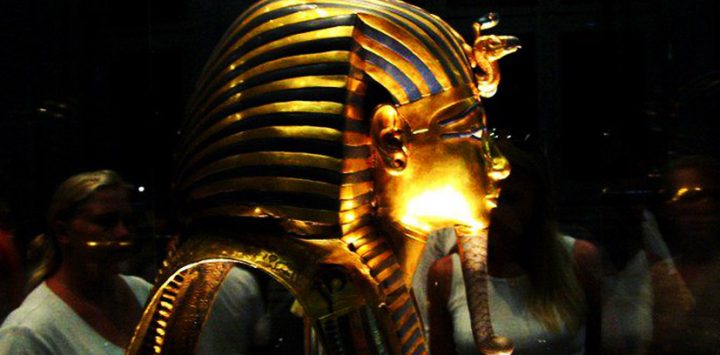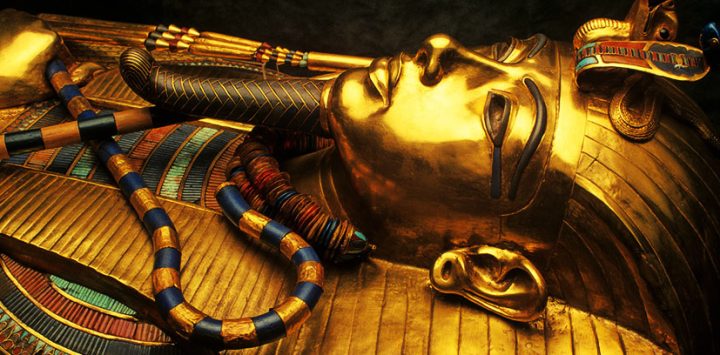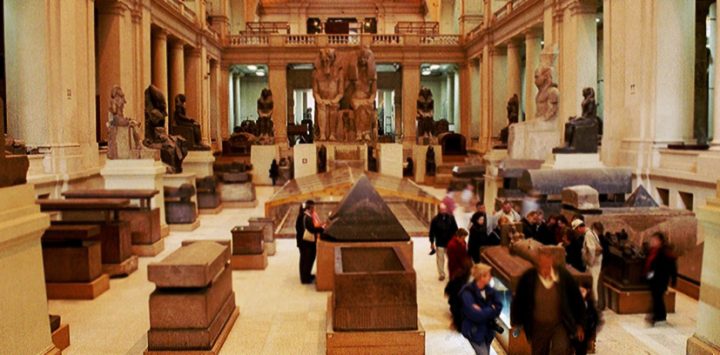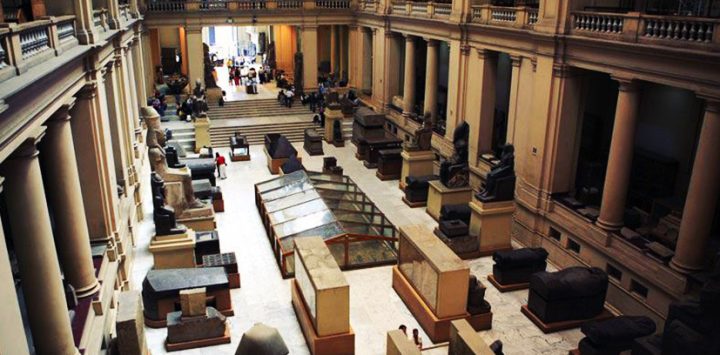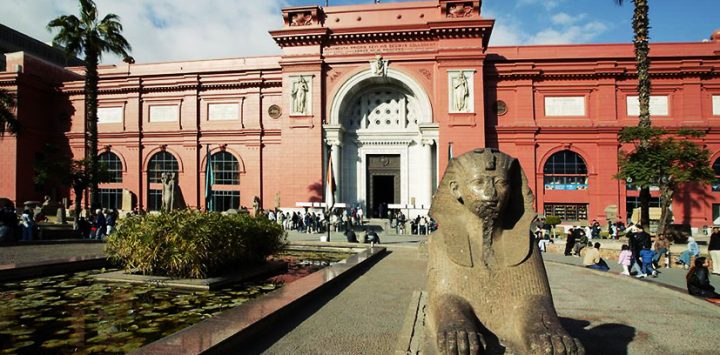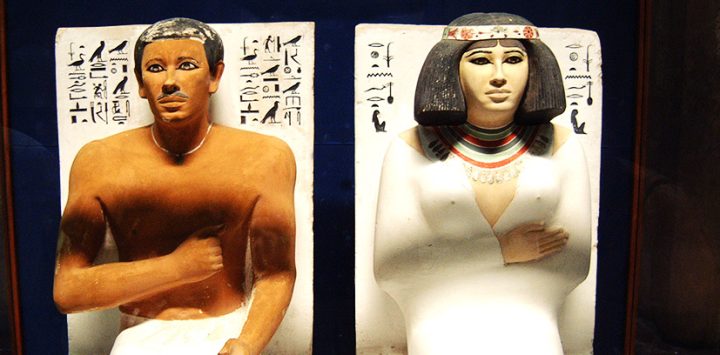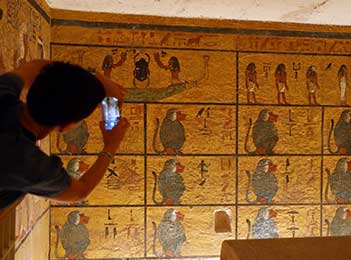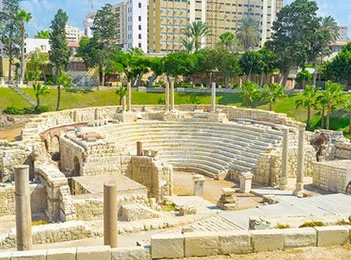The Geographical Location of the Egyptian Museum
The Egyptian Museum is situated in the heart of the city of Cairo, the Egyptian capital, in the famous Tahrir Square, which witnessed the outbreak of the Egyptian revolution of the 25th of January 2011.
This made the visit to the Egyptian Museum even more significant as travelers coming from all over the world to spend a tour in Egypt would come to visit the museum and also view the Tahrir Square, the theatre of many political events in the past four years; a period which was quite distinctive for the Egyptians.
The History and the Establishment of the Egyptian Museum
The idea behind establishing an Egyptian Museum to host all these priceless findings dating to various periods of the ancient Egyptian history goes back to the beginning of the 19th century after the famous French scholar; Champollion was able to translate the symbols in the Rosetta stone.
Mohamed Ali established the very first museum of antiquities in 1935 and it consisted of a small old house that was situated in the Azbakeya neighborhood in Cairo, the district of the upper class at that point of history.
After the death of Mohamed Ali, his successors started neglecting the importance of the Egyptian antiquities. They even started presenting some of the most valuable items to the kings and rulers of Europe.
The first director of the Egyptian council of antiquities, it wasn’t called by that name at the time though, was Mariette, who was assigned in 1958. This French history scholar established another museum in the neighborhood of Boulak in Cairo to host the Egyptian antiquities he was able to collect.
Afterwards in 1863, Khedive Ismail issued a decree to establish the Egyptian museum but this project was limited to the enlargement of the already existing museum in Boulak.
In Fact this museum that we view today in the Tahrir Square was actually founded in 1903 during the ruling period of Khedive Abass Helmi II in 1902. The building of the museum was designed by the French architect; Marcel Dourgnon, who followed the European Classical outlines of design, putting into consideration the future need for expansion and enlargements.
The building of the museum is featured with its vast halls and high walls with the sunlight penetrating the ceiling and lighting up the different sections of the museum, in the same style the displays were exhibited in the ancient Egyptian Pharaonic Temples.
The Sections of the Egyptian Museum
The Egyptian Museum of Antiquities is designed like a timeline which begins with the prehistoric period, or the most ancient displays and ends with the most recent at the end of the visit.
When the visitor spending his holiday in Egypt first enters the museum, he notices that it consists of two floors. The visitor begins his tour from the right hand side of the museum which hosts the displays belonging to the prehistoric period. This section includes the tools and things the ancient Egyptians used before the invention of the written language more than 3000 years BC. The displays include a number of pottery items, fishing and hunting tools, and some primitive decoration items.
The second section of the museum contains displays dating back to the reign of the 1st and 2nd dynasties with the famous plate of King Menes being the most significant display as it shows the first king of Egypt beating his enemies and announcing the establishment of the first united kingdom in Egypt more than 5000 years ago.
We move afterwards to the section displaying the exhibits of the Old Kingdom with the limestone statue of King Djoser, the builder of the wonderful Step Pyramid of Saqqara being among the most interesting exhibits. This is besides a matchless statue of King Cheops, the builder of the Grand Pyramid in Giza sitting on his thrown. There are also many other displays from this golden period of the ancient Egyptian history.
The displays of the intermediate period of the ancient history include a large number of wonderful large-sized statues of different rulers and kings of Egypt including Sensort I, Amenmehat III, and many other Pharaohs.
The most interesting displays in the Egyptian Museum of Antiquities actually date back the reign of the New Kingdom. Away from the different pyramids of ancient Egypt, all the other Pharaonic monument and temples which survived until today in fact belong to this period of the Egyptian history.
Among the most fascinating displays of this huge section of the Egyptian museum are the displays of king Akhenaten. This includes many statues and images of his capital Aten, which only survived for a short period of time.
This era has witnessed an evolution in the ancient Egyptian art with the faces being longer than usual giving it a cartoon-like dimension that is not found in any other periods. These displays include some statues of the king Akhenaten and his wife Nefertiti.
The most marvelous displays hosted in the Egyptian museum that should not be missed by any traveler who visit Egypt for its history and ancient civilization are the collection of the young mysterious king; Tut Ankh Amun.
This collection includes the marvelous pure gold mummy cover of the king which is truly magnificent and well preserved to the extent one thinks it was created yesterday; not more than 3000 years ago.
The section of Tut Ankh Amun has more than 1700 exhibits which include hunting tools, games, different items the deceased used to take with him to the afterlife, and canoptic jars made out of alabaster, and some wonderful wooden items ornamented with gold.
Another magnificent section of the Egyptian Museum would be the Royal Mummies Hall which displays the real mummies of some of the most famous Pharaohs of ancient Egypt like Tuthmosis II, Ramses II, and Seti I. Mummification was a very sophisticated and important process the ancient Egyptians used to preserve the bodies of the deceased in order to live in the afterlife.

